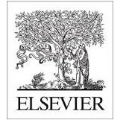This study presents an inter-universal mathematical-logical framework constructed upon the minimal axiom Cogito, ergo sum (CES), integrating the Intermediate Meta-Universe (IMU) and the Hierarchical State Grid (HSG). The CES defines existence as a reflexive correspondence --'to be' and 'to be sayable'--and positions any formal system, including ZFC or HoTT, as an attachable extension atop this minimal structure. The IMU functions as a registry of axiomatic dependencies that connect heterogeneous theories, employing the Institution-theoretic framework to ensure coherent inter-theoretical linkages. The HSG concretizes these ideas through categorical construction, defined by three orthogonal axes: the state-depth axis, the mapping-hierarchy axis, and the temporal axis incorporating the principle of 'no future reference.' Through these, the identity of 'definition = state' is formally established as a categorical property. Extending this structure to biological systems, the neural system is implemented as a 0-3D complex of neuron-function fields on the HSG, while its categorical extensions via fiberization over the material base enable the parallel integration of multiple physiological universes-neural, endocrine, learning, genetic, and input/output systems-into a coherent adjoint ensemble. Within this framework, human behavior and cognition emerge as temporal compositions of inter-universal algorithms constrained by the material base. Finally, by contrasting human cognition, which relies on external CES, with machine existence, this study introduces the concept of internal CES, wherein a machine grounds its own logic upon the factuality of its operation. This internal self-axiomatization establishes a continuous bridge between philosophical ontology and engineering implementation, providing a new foundation for the autonomous and self-defining existence of artificial intelligence.
翻译:暂无翻译




